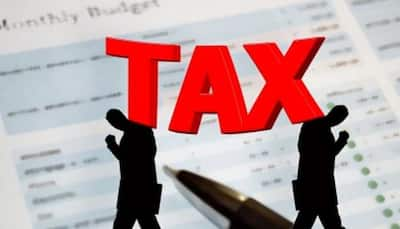New Delhi: Several instances have come up where an individual tax fil has chosen Old Tax Regime in his or her office investment declaration but would want to know if he or she can file ITR under New Tax Regime during actual filing.
told that the switch between the regimes is possible only for those individuals who do not have any business income.
“A salaried individual can make a choice of tax regime every year before the return filing season. However, what generally happens is that a salaried individual has to choose the tax regimes much earlier closer to the start of the financial year with the employer. Since the taxation slabs and rates of tax are different under the old regime and new regime, the employer shall need the choice from every employee at the beginning of the year itself so as to make an estimate of total income and taxes thereon,” Bhuta says.
The prior understanding, Bhuta adds, is necessary for the employer, for deducting tax at source from the salary income every month. Further, some most peculiar differences between the old regime and new regime are the deductions available under chapter VIA under the old regime, he adds.
Bhuta adds that there are certain cases, where the salaried taxpayer may have selected the old tax regime with the employer at the time of investment declarations and then while filing ITR realized that the new tax regime is more beneficial. In that case the tax-payer can very well decide to choose the new tax regime at the time of filing return of income.
ITR filers should keep one thing in mind while making the switch. Bhuta says, computation of salary income will differ from the one shown by the employer in Form 16A- Part B and Form 26AS.
Also, there will be a refund situation in the return which is to be filed which shall differ from the employer’s working, he adds.
There are minor chances of CPC enquiring on the mismatch of income offered between what is reflected in 26AS and the return of income, but that can be easily catered to. Section 115 BAC (6) allows the taxpayer to choose the new tax regime until the filing of return of income. One should note that the option is available only in those cases where return is filed as per the time limits of section 139(1) and not on any belated returns, Bhuta says.
advises that it is a better option for individuals earning a gross salary of 13 lakh and above to stick with the old tax regime.
“Switching from the old tax regime to the new tax regime during the filing of Income Tax Returns (ITR) is an option available to individuals. For those earning a gross salary of 13 lakh and above, we recommend sticking with the old tax regime. While the new tax regime offers potentially lower tax rates, it does not contribute significantly to achieving long-term financial goals. Over a 30-40 year earning span, the taxes paid under the new regime do not provide direct benefits to taxpayers,” adds Kaushik.
Including House Rent Allowance (HRA) and Leave Travel Allowance (LTA).
Such as meal coupons, company car lease, fuel and maintenance, driver’s salary, learning and development expenses, gifts up to Rs 5000, books and periodicals, and health and wellness benefits.
Including adjustments for home loan interest up to Rs 2 lakh, with the ability to carry forward any remaining balance; unlimited deduction for education loan interest; and deductions under sections 80C, 80CCD(1b), 80CCD(2), 80D, 80G, and 80TTA/TTB for bank interest.
Kaushik says, “Utilizing these options to their fullest extent is crucial for reducing tax liabilities based on current financial needs and future goals. Seeking advice from tax experts can further optimize tax planning strategies, which we refer to as diverting Tax2wellness. Understanding individual financial circumstances and aligning take-home pay with future financial aspirations provides clarity in making informed decisions.”
Stay informed on all the , real-time updates, and follow all the important headlines in and on Zee News.











